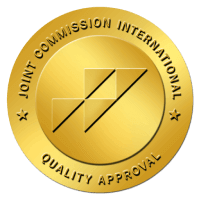HIP
- NORMAL ANATOMY OF THE HIP JOINT
- FEMORO ACETABULAR IMPINGEMENT
- HIP FRUCTURE
- AVASCULAR NECROSIS
- OSTEOARTHRITIS OF THE HIP
- HIP ARTHROSCOPY
- TOTAL HIP REPLACEMENT
- REVISION HIP REPLACEMENT
The thigh bone, femur, and the pelvis, acetabulum, join to form the hip joint. The hip joint is a “ball and socket” joint. The “ball” is the head of the femur, or thigh bone, and the “socket” is the cup shaped acetabulum. The joint surface is covered by a smooth articular surface that allows pain free movement in the joint.
The cartilage cushions the joint and allows the bones to move on each other with smooth movements. This cartilage does not show up on X-ray, therefore you can see a “joint space” between the femoral head and acetabular socket.
Pelvis
The pelvis is a large, flattened, irregularly shaped bone, constricted in the center and expanded above and below. It consists of three parts: the ilium, ischium, and pubis.
The socket, acetabulum, is situated on the outer surface of the bone and joins to the head of the femur to form the hip joint.
Femur
The femur is the longest bone in the skeleton. It joins to the pelvis, acetabulum, to form the hip joint.
Femoroacetabular impingement (FAI) is a condition where there is too much friction in the hip joint from bony irregularities causing pain and decreased range of hip motion. The femoral head and acetabulum rub against each other creating damage and pain to the hip joint. The damage can occur to the articular cartilage (the smooth white surface of the ball or socket) or the labral tissue (the lining of the edge of the socket) during normal movement of the hip. The articular cartilage or labral tissue can fray or tear after repeated friction. Over time, more cartilage and labrum is lost until eventually the femur bone and acetabulum bone impact on one other. Bone on bone friction is commonly referred to as Osteoarthritis.
FAI impingement generally occurs as two forms: Cam and Pincer.
CAM Impingement: The Cam form of impingement is when the femoral head and neck are not perfectly round, most commonly due to excess bone that has formed. This lack of roundness and excess bone causes abnormal contact between the surfaces.
PINCER Impingement: The Pincer form of impingement is when the socket or acetabulum rim has overgrown and is too deep. It covers too much of the femoral head resulting in the labral cartilage being pinched. The Pincer form of impingement may also be caused when the hip socket is abnormally angled backwards causing abnormal impact between the femoral head and the rim of the acetabulum.
Most diagnoses of FAI include a combination of the Cam and Pincer forms.
Symptoms of FAI
Symptoms of femoroacetabular impingement can include the following:
- Groin pain associated with hip activity
- Complaints of pain in the front, side or back of the hip
- Pain may be described as a dull ache or sharp pain
- Patients may complain of a locking, clicking, or catching sensation in the hip
- Pain often occurs to the inner hip or groin area after prolonged sitting or walking
- Difficulty walking uphill
- Restricted hip movement
- Low back pain
- Pain in the buttocks or outer thigh area
Risk Factors
A risk factor is something that is likely to increase a person’s chance of developing a disease or condition. Risk factors for developing femoroacetabular impingement may include the following:
- Athletes such as football players, weight lifters, and hockey players
- Heavy laborers
- Repetitive hip flexion
- Congenital hip dislocation
- Anatomical abnormalities of the femoral head or angle of the hip
- Legg-Calves-Perthes disease: a form of arthritis in children where blood supply to bone is impaired causing bone breakdown.
- Trauma to the hip
- Inflammatory arthritis
Diagnosis
Hip conditions should be evaluated by an orthopaedic hip surgeon for proper diagnosis and treatment.
- Medical History
- Physical Examination
- Diagnostic studies including X-rays, MRI scans and CT Scan
Treatment Options
Conservative treatment options refer to management of the problem without surgery. Nonsurgical management of FAI will probably not change the underlying abnormal biomechanics of the hip causing the FAI but may offer pain relief and improved mobility.
Conservative Treatment Measures
- Rest
- Activity Modification and Limitations
- Anti-inflammatory Medications
- Physical Therapy
- Injection of steroid and analgesic into the hip joint
Surgical Treatment
- Hip arthroscopy to repair femoroacetabular impingement is indicated when conservative treatment measures fail to provide relief to the patient.
The hip joint is a “ball and socket” joint. The “ball” is the head of the femur, or thigh bone, and the “socket” is the cup shaped acetabulum. The joint surface is covered by a smooth articular surface that allows pain free movement in the joint.
Hip fracture is a break that occurs near the hip in the upper part of the femur or thigh bone. The thigh bone has two bony processes on the upper part – the greater and lesser trochanters. The lesser trochanter projects from the base of the femoral neck on the back of the thigh bone. Hip fractures can occur either due to a break in the femoral neck, in the area between the greater and lesser trochanter or below the lesser trochanter.
Hip fracture is most frequently caused after minor trauma in elderly patients with weak bones, and by a high-energy trauma or serious injuries in young people. Long term use of certain medicines, such as bisphosphonates to treat osteoporosis (a disease causing weak bones) and other bone diseases, increases the risk of hip fractures.
Signs & Symptoms
Signs and symptoms of hip fracture include:
- Pain in the groin or outer upper thigh
- Swelling and tenderness
- Discomfort while rotating the hip
- Shortening of the injured leg
- Outward or inward turning of the foot and knee of the injured leg
Your doctor may order an X-ray to diagnose your hip fracture. Other imaging tests, such as the magnetic resonance imaging or (MRI), may also be performed to detect the fracture.
Depending on the area of the upper femur involved, hip fractures are classified as
- Intracapsular Fracture
- Intertrochanteric Fracture
- Subtrochanteric Fracture
Hip fractures can be corrected and aligned with non-operative and operative methods:
Traction may be an option to treat your condition if you are not fit for surgery. Skeletal traction may be applied under local anesthesia, where screws, pins and wires inserted into the femur, and a pulley system is set up at the end of the bed to bear heavy weights. These heavy weights help in correcting the misaligned bones until the injury heals.
Hip fractures can be surgically treated with external fixation, intramedullary fixation, or by using plates and screws.
Avascular necrosis, also called osteonecrosis is a condition in which bone death occurs because of inadequate blood supply to it. Lack of blood flow may occur when there is a fracture in the bone or a joint dislocation that may damage nearby blood vessels. Chronic use of high doses of steroid medications and heavy alcohol consumption are the two main risk factors of avascular necrosis. Initially, small breaks appear in the bone that may eventually collapse. Hip joint is most commonly affected; however the knee and shoulder may also be involved.
The symptoms appear all of a sudden if it’s a result of an injury. In other situations, the pain and stiffness may gradually appear over a period of time. Typically, avascular necrosis causes pain and restricted range of motion in the joint affected. Your doctor will diagnose the condition using imaging tests such as X-rays, MRI scan and bone scan that help rule out other causes of joint pain.
The treatment for avascular necrosis aims at preventing further loss of bone and it depends on the bone damage that has occurred already. Conservative treatment would reverse early stages of avascular necrosis whereas surgical treatment may be required in more advanced stages.
Conservative Approach
- Medications: Non-steroidal anti-inflammatory drugs (NSAID’S) may be prescribed that help control your pain and swelling
- Rest: Restriction of physical activities and use of crutches to decrease weight bearing on your joints may be beneficial
- Exercises: Regular exercises that improve your range of motion may be done
- Electrical stimulation: Electric currents promote new bone growth. They can be applied directly to the area of damage or through electrodes fixed on skin. It helps replace the damaged bone
Surgical Treatment
- Core decompression: During this procedure, a portion of the inner layer of the bone is removed to relieve the pressure inside the bone. This decreases the pain and allows growth of new blood vessels thereby stimulates new bone growth
- Bone transplant: A healthy bone from harvested from other part of your body is grafted into the affected area.
- Bone reshaping (osteotomy): This procedure is done in advanced stages and involves reshaping of the bone which is done to decrease the stress placed over the affected bone.
- Joint replacement: Joint replacement surgery is done as a last resort when the bone has collapsed needing artificial replacement
Osteoarthritis, also called degenerative joint disease is the most common form of arthritis. It occurs most often in older people. This disease affects the tissue covering the ends of bones in a joint (cartilage). In a person with osteoarthritis, the cartilage becomes damaged and worn out causing pain, swelling, stiffness and restricted movement in the affected joint. Although osteoarthritis may affect various joints including hips, knees, hands, and spine, hip joint is most commonly affected. Rarely, the disease may affect the shoulders, wrists and feet.
Osteoarthritis is characterized by damaged articular cartilage, cartilage lining the hip joint. Advanced age is one of the most common reasons for osteoarthritis of hip. You may also develop osteoarthritis if you had hip injury or fracture in the past, if you have family history of osteoarthritis, suffering from hip diseases such as avascular necrosis and other congenital or developmental hip diseases.
How do you know that you have osteoarthritis of hip? The characteristic symptoms and diagnostic test helps in diagnosing the condition. You will experience severe pain confined to hip and thighs, morning stiffness and limited range of motion. Based on the symptoms your orthopedic surgeon will perform physical examination, X-rays and other scans, and also some blood tests to rule out the other conditions that may cause similar symptoms.
Management of Osteoarthritis
There are several treatments and lifestyle modifications that can help you ease your pain and symptoms.
- Medications: Pain-relieving medications such as NSAIDs, COX-2 inhibitors and opioids may be prescribed. Topical medications such as ointments can be applied over the skin where there is pain. If the pain is very severe, corticosteroid injection can be given directly into the affected joint to ease the pain.
- Other Treatments: Your physiotherapist will teach you exercises to keep joints flexible and improve muscle strength. Heat/cold therapy which involves applying heat or cold packs to the joints provides temporary pain relief. Lifestyle modifications can be done to control weight and avoid extra stress on the weight-bearing joints.
- Surgery: Hip joint replacement surgery is considered as an option when the pain is so severe that it affects your ability to carry out normal activities.
Arthroscopy, also referred to as keyhole or minimally invasive surgery, is a procedure in which an arthroscope is inserted into a joint to check for any damage and repair it simultaneously.
An arthroscope is a small, fiber-optic instrument consisting of a lens, light source, and video camera. The camera projects an image of the inside of the joint onto a large screen monitor allowing the surgeon to look for any damage, assess the type of injury, and repair the problem.
Hip arthroscopy is a surgical procedure performed through very small incisions to diagnose and treat various hip conditions including:
- Removal of torn cartilage or bone chips that cause hip pain and immobility.
- Repair a torn labrum: The labrum is a fibrous cartilage ring which lines the acetabular socket.
- Removal of bone spurs or extra bone growths caused by arthritis or an injury.
- Removal of part of the inflamed synovium (lining of the joint) in patients with inflammatory arthritis. This procedure is called a partial synovectomy.
- Repair of fractures or torn ligaments caused by trauma.
- Evaluation and diagnosis of conditions with unexplained pain, swelling, or stiffness in the hip that does not respond to conservative treatment.
Hip arthroscopy is performed under regional or general anesthesia depending on you and your surgeon’s preference.
Your surgeon will make 2 or 3 small incisions about 1/4 inch in length around the hip joint. Through one of the incisions an arthroscope is inserted. Along with it, a sterile solution is pumped into the joint to expand the joint area and create room for the surgeon to work.
The larger image on the television monitor allows the surgeon to visualize the joint directly to determine the extent of damage so that it can be surgically treated.
After the surgery, the incisions are closed and covered with a bandage.
The advantages of hip arthroscopy over the traditional open hip surgery include:
- Smaller incisions
- Minimal trauma to surrounding ligaments, muscles, and tissues
- Less pain
- Faster recovery
- Lower infection rate
- Less scarring
- Earlier mobilization
- Shorter hospital stay
As with any surgery, there are potential risks and complications involved. It is very important that you are informed of these risks before you decide to proceed with hip arthroscopy surgery.
Possible risks and complications include:
- Infection at the surgical incision site or in the joint space
- Nerve damage which may cause numbness, tingling, pain, and weakness
- Excess bleeding into the joint, a condition called hemarthrosis
- Blood clots may form inside the deep veins of the legs which can travel to the lungs (pulmonary embolism).
Your doctor may advise you to take certain precautions to promote faster recovery and prevent further complications. These include:
- Taking pain medications as prescribed.
- Use of crutches to prevent or limit bearing weight on the operated hip
- Physical therapy exercises should be performed to restore normal hip function and improve flexibility and strength
- Eating a healthy diet and avoiding smoking will help in faster healing and recovery
- Avoid activity which involves lifting heavy things or strenuous exercises for first few weeks after surgery
With advances in surgical techniques, arthroscopy plays an important role in diagnosis and treatment of hip diseases. Also, patients can anticipate a quicker recovery with less post-operative complications following hip arthroscopy surgery.
Total hip replacement is a surgical procedure in which the damaged cartilage and bone is removed from the hip joint and replaced with artificial components. The hip joint is one of the body’s largest weight-bearing joints, located between the thigh bone (femur) and the pelvis (acetabulum). It is a ball and socket joint in which the head of the femur is the ball and the pelvic acetabulum forms the socket. The joint surface is covered by a smooth articular cartilage which acts as a cushion and enables smooth movements of the joint.
A number of diseases and conditions can cause damage to the articular cartilage. Total hip replacement surgery is an option to relieve severe arthritis pain that limits your daily activities.
Disease Overview
Arthritis is inflammation of the joints resulting in pain, swelling, and stiffness and limited movement. Hip arthritis is a common cause of chronic hip pain and disability.
The three most common types of arthritis that affect the hip are:
- Osteoarthritis: It is characterized by progressive wearing away of the cartilage of the joint. As the protective cartilage wears down, the bone ends rub against each other and cause pain in the hip. Rheumatoid arthritis: This is an autoimmune disease in which the tissue lining the joint (synovium) becomes inflamed, resulting in the production of excessive joint fluid (synovial fluid). This leads to loss of cartilage causing pain and stiffness.
- Traumatic Arthritis: This is a type of arthritis resulting from a hip injury or fracture. Such injuries can damage the cartilage and cause hip pain and stiffness over a period of time.
Symptoms
The most common symptom of hip arthritis is joint pain and stiffness resulting in limited range of motion. Vigorous activity can increase the pain and stiffness which may cause limping while walking.
Diagnosis
Diagnosis is made by evaluating medical history, physical examination and X-rays.
Surgical Procedure
Surgery may be recommended, if conservative treatment options such as anti-inflammatory medications and physical therapy do not relieve the symptoms.
The surgery is performed under general anesthesia. During the procedure a surgical cut is made over the hip to expose the hip joint and the femur is dislocated from the acetabulum. The surface of the socket is cleaned and the damaged or arthritic bone is removed using a reamer. The acetabular component is inserted into the socket using screws or occasionally bone cement. A liner made of plastic, ceramic or metal is placed inside the acetabular component. The femur or thigh bone is then prepared by removing the arthritic bone using special instruments, to exactly fit the new metal femoral component. The femoral component is then inserted to the femur either by a press fit or using bone cement. Then the femoral head component made of metal or ceramic is placed on the femoral stem. All the new parts are secured in place using special cement. The muscles and tendons around the new joint are repaired and the incision is closed.
Post-operative Care
After undergoing total hip replacement, you must take special care to prevent the new joint from dislocating and to ensure proper healing. Some of the common precautions to be taken include:
- Avoid combined movement of bending your hip and turning your foot inwards
- Keep a pillow between your legs while sleeping for 6 weeks
- Never cross your legs and bend your hips past a right angle (90)
- Avoid sitting on low chairs
- Avoid bending down to pick up things, instead a grabber can be used to do so
- Use an elevated toilet seat
Risks
As with any major surgical procedure, there are certain potential risks and complications involved with total hip replacement surgery. The possible complications after total hip replacement include:
- Infection
- Dislocation
- Fracture of the femur or pelvis
- Injury to nerves or blood vessels
- Formation of blood clots in the leg veins
- Leg length inequality
- Hip prosthesis may wear out
- Failure to relieve pain
- Scar formation
- Pressure sores
Total hip replacement is one of the most successful orthopaedic procedures performed for patients with hip arthritis. This procedure can relieve pain, restore function, improve your movements at work and play, and provide you with a better quality of life.
Revision hip replacement surgery is performed under general anesthesia. During the procedure, your surgeon will make an incision over the hip to expose the hip joint. Then the femur is dislocated from the acetabulum so that the old plastic liner and the metal socket can be removed from the acetabulum.
After removal, the acetabulum is prepared using extra bone and wire mesh to make up for the socket space and shape. Then the new metal shell is inserted into the socket using screws or special cement. A liner made of plastic, ceramic or metal is placed inside the metal socket.
Revision hip replacement is a complex surgical procedure in which all or part of a previously implanted hip-joint is replaced with a new artificial hip-joint. Total hip replacement surgery is an option to relieve severe arthritis pain that limits your daily activities. During total hip replacement the damaged cartilage and bone is removed from the hip joint and replaced with artificial components. At times, hip replacement implants can wear out for various reasons and may need to be replaced with the help of a surgical procedure known as revision hip replacement surgery.
Indications:
Revision hip replacement is advised in patients with the following conditions:
- Increasing pain in the affected hip
- Worn out plastic or polyethylene prosthesis
- Dislocation of previous implants
- Loosening of the femoral or acetabular component of the artificial hip joint
- Infection around the hip prosthesis causing pain and fever
- Weakening of bone around the hip replacement (Osteolysis)
Revision hip replacement surgery is performed under general anesthesia. During the procedure, your surgeon will make an incision over the hip to expose the hip joint. Then the femur is dislocated from the acetabulum so that the old plastic liner and the metal socket can be removed from the acetabulum.
After removal, the acetabulum is prepared using extra bone and wire mesh to make up for the socket space and shape. Then the new metal shell is inserted into the socket using screws or special cement. A liner made of plastic, ceramic or metal is placed inside the metal socket.
To prepare the femoral component, the top of the femur bone is cut into several pieces to remove the implant. The segments of bone are cleaned and the new femoral implant is inserted into the femur either by a press fit or using bone cement. The segments of the femur and the femoral component are held together with surgical wires. Then the femoral head component made of metal or ceramic is placed on the femoral stem. All the new components are secured in place to form the new hip joint. The muscles and tendons around the new joint are repaired and the incision is closed.
After undergoing revision hip replacement, you must take special care to prevent the new joint from dislocating and to ensure proper healing.
Some of the common precautions to be taken include:
- Avoid combined movement of bending your hip and turning your foot inwards because it can cause dislocation
- Keep a pillow between your legs while sleeping for 6 weeks
- Never cross your legs or bend your hips past a right angle (90 degrees)
- Avoid sitting on low chairs
- Avoid bending down to pick up things, instead a grabber can be used to do so
- Use an elevated toilet seat
Risks:
As with any major surgical procedure, there are certain potential risks and complications involved with revision hip replacement surgery.
The possible complications after revision hip replacement include:
- Infection
- Dislocation
- Fracture of the femur or pelvis
- Injury to nerves or blood vessels
- Formation of blood clots in the leg veins
- Leg length inequality
- Hip prosthesis may wear out
- Failure to relieve pain
Revision hip replacement removes your failed hip implants from a previous total hip replacement surgery, and replaces them with new ones, which will help make your hip strong, stable and flexible again. It improves mobility, strength and enables patients to return once again to normal activity with a pain-free hip.













